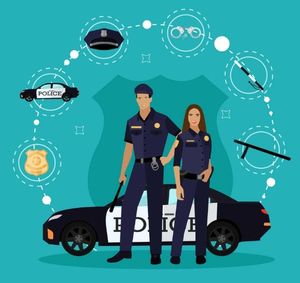Quick Summary:
- Learning games are games for the sole purpose of learning.
- Gamification is when you integrate game elements into learning.
- 3D just isn't worth it. It's expensive, slow, and distracts from learning
- Research recommends integrating gamified learning activities into instruction
- You can create gamified learning activities with Mazetec. We have a customer doing this now :).
The a meta-analysis on the Adaptive Gamification for Learning Environments find adding gaming features’ (integration of points, choices, and achievements) increase learning gains and learner engagement when added to instructional content.
Learning environments often fail to engage users and end up under-used. Many studies show that gamification of learning environments can enhance learners’ motivation to use learning environments. However, learners react differently to specific game mechanics and little is known about how to adapt gaming features to learners’ profiles. In this paper, we propose a process for adapting gaming features based on a player model. This model is inspired from existing player typologies and types of gamification elements. Our approach is implemented in a learning environment with five different gaming features, and evaluated with 266 participants. The main results of this study show that, amongst the most engaged learners (i.e., learners who use the environment the longest), those with adapted gaming features spend significantly more time in the learning environment. Furthermore, learners with features that are not adapted have a higher level of amotivation. These results support the relevance of adapting gaming features to enhance learners’ engagement, and provide cues on means to implement adaptation mechanisms.
Learning games are games for the sole purpose of learning.
Gamification is when you integrate game elements into learning environments without turning the activity into a game. Gamification has been preferred by many in the research community because the impact is clearly measurable.
When we work with professors and trainers, most suggest creating Virtual Reality 3D experiences. This is misguided thinking. It takes millions of dollars and large highly skilled teams to develop to create 3D worlds with 3D characters like SecondLife or Call of Duty, or lots of graphics and animations like CandyCrush.
We have reviewed past studies, that found:
- Hi-fidelity 3D learning games distract from the content and take the learner away from the learning environment.
- Low-fidelity 3D learning games are not worth it. Many have tried and failed. Also it may be difficult for learners to understand what is going on.
- No learning reflection points
Gamify your content for remote teaching or in the classroom.
Boost Engagement
- Use storytelling to focus your Content around a hero’s journey to create real-world memorable lessons the learner can play and experience.
- Use relevant images to enhance the content and make it easier to understand
- Avoid videos longer than 5 minutes
Spark Competition with Scenario/Game Credits
- Heighten the challenge with by implementing "points", "$", "credits" or anything else.
- Make the goal of the game to use the fewest possible decision.
- Begin the game with $250 available to spend on each scenario.
- Set the 'cost' of each choice to subtract $25 from the $250.
- Play the game and reach the end before you run out of money.
Increase Learning
- Add reflection points, using hints and the pause feature.
- Reflection gives the learner has a chance to think about consequences they've experienced and what to do next.
Create the feeling of real-world pressure. Practice under pressure; Perform under pressure.
- Increase pressure with a race against the clock.
- Add limited pressure by limiting the overall scenario time.
- Add moderate pressure by limiting the overall scenario time with penalties and bonuses.
- Maximize pressure, by setting the overall time to 5 seconds and only add time for correct decisions and subtract time for poor decisions. This creates a sensation that the learner is always on the verge and reveals true gut reactions, because learners choose the most familiar option.
Personalize the learning journey with Piping, while reusing content.
When the process might be the same but people want to learn it from their identity and; when the consequences are the same, but everyone calls it something different.
- Pipe answers forward to personalize the content using %answer% in your content.
-
Example: Are you an independent, a democrat, or republican? How a bill becomes a law follows the same process, but ask anyway and learners will find it more engaging.
- Use Piping to reflect their answer back to them.
- “So you’re a %answer%, okay well let’s get started.”
- Give it a try.
Kick start your gamified learning activity
- Start by uploading your powerpoint
- Add decisions and link to consequences,
- Define your game engine with time, game credits or points.
- Start beta testing with your learners
Mazetec is an adaptive gamification system, you can create learning games for the sole purpose of learning or within your existing learning environment.
